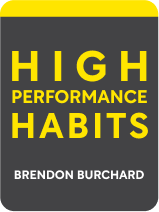

This article is an excerpt from the Shortform book guide to "High Performance Habits" by Brendon Burchard. Shortform has the world's best summaries and analyses of books you should be reading.
Like this article? Sign up for a free trial here .
How would you describe your work-life balance? Do you think it’s healthy? What does a healthy work-life balance look like to you?
Many people struggle to maintain a healthy work-life balance. They claim that there aren’t enough hours in the day to get their work done and focus on their personal life. However, for most people, the problem isn’t time. It’s inefficiency.
Here is a simple exercise to help you chart a healthy work-life balance.
Charting a Healthy Work-Life Balance
Many people claim there aren’t enough hours in the day to get their work done and focus on their personal life. However, for most people, their problem isn’t time. It’s inefficiency. Increased efficiency helps you focus on the important things in your life and maintain a healthy work-life. This increases your performance by helping you achieve the goals you care about, lowering your stress levels, and giving you time to relax.
People often claim their life is “out of balance” without knowing what a healthy work-life balance looks like. Charting your work-life balance gives you a clearer picture of what your life looks like when you feel “in balance” and “out of balance.” This exercise doesn’t focus on hours. Instead, it focuses on the amount of happiness and satisfaction you’re feeling in the various areas of your life.
To chart your work-life balance:
- Divide your life into 10 categories: family, friends, well-being, work, significant other, exploration, religion/spirituality, emotions, and money.
- Pick a day of the week (preferably a weekend if you work a typical work week).
- On that day, rate your happiness on a scale from 1-10 in each of the 10 areas.
- Once you’ve finished your ratings, write down your goals in each of the 10 areas.
- Repeat this process every week.
Think about which areas of your life are bringing you satisfaction, and which areas need more focus and attention. Focusing on how you feel about each area instead of the amount of time you’re investing in it shows you that time doesn’t necessarily correlate with happiness or contentment. For example, you could spend only four hours a day at work and still feel overwhelmed or frustrated. Conversely, you could spend only four hours a day with your family and feel happy and content.

———End of Preview———
Like what you just read? Read the rest of the world's best book summary and analysis of Brendon Burchard's "High Performance Habits" at Shortform .
Here's what you'll find in our full High Performance Habits summary :
- The 6 habits that high performers have
- How being a high performer is about more than one big achievement
- The 3 traps that can foil you, even if you're a high performer






